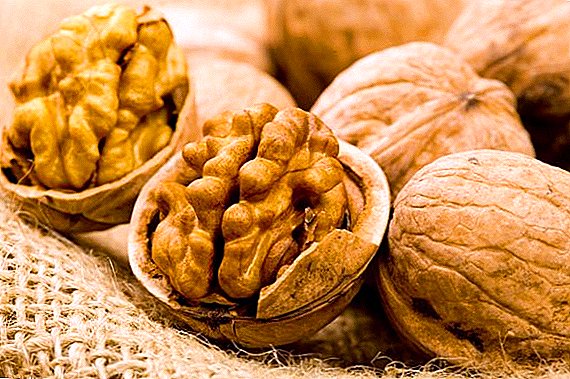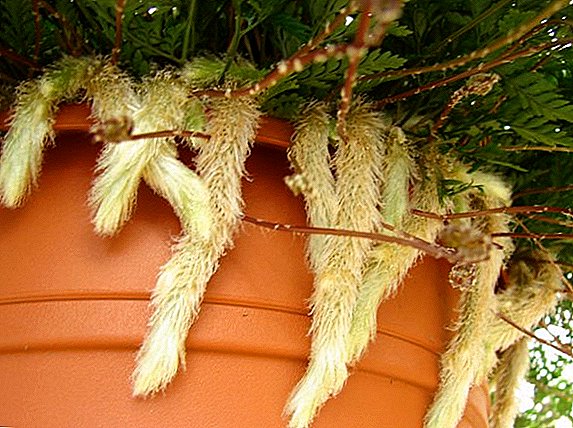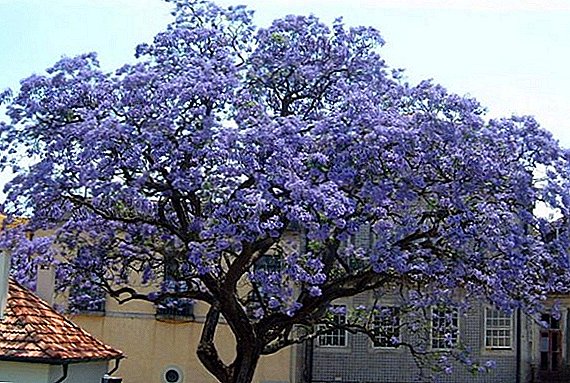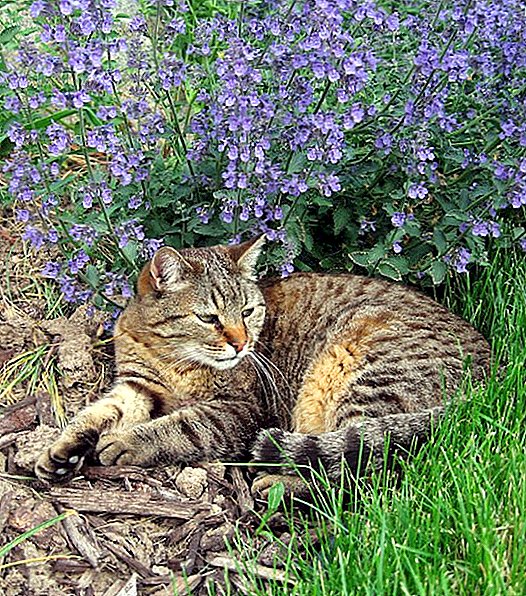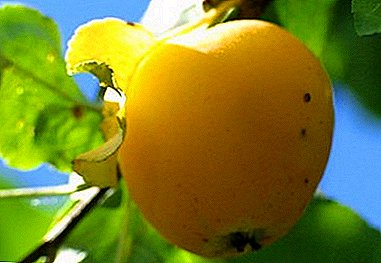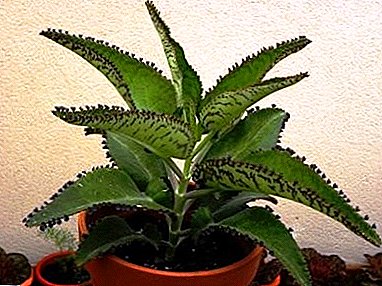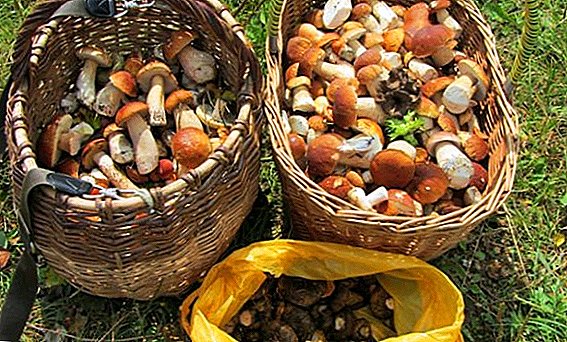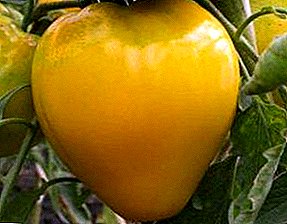 All mushrooms are divided into 4 types: edible, conditionally edible, inedible and poisonous. The first two are distinguished by the fact that conditionally edible can not be consumed fresh, but only after heat treatment. They have bitterness or sharpness in taste or unpleasant in consistency. And after processing all these qualities disappear. It is about the most popular specimens from this category that will be discussed in our article.
All mushrooms are divided into 4 types: edible, conditionally edible, inedible and poisonous. The first two are distinguished by the fact that conditionally edible can not be consumed fresh, but only after heat treatment. They have bitterness or sharpness in taste or unpleasant in consistency. And after processing all these qualities disappear. It is about the most popular specimens from this category that will be discussed in our article.
Boletus Wolf
Boletus lupus (Latin Boletus lupinus) is also called false satanic. It is a medium-sized mushroom with a cap, having a length in the range from 5 to 10 cm. In some specimens it grows up to 20 cm. In youth, it has the shape of a semicircle, in adulthood it changes to a convex or convex-prostrate, sometimes with sharp edges .  The surface of the cap can be painted in different colors, most often with pinkish or reddish hues. By the end of life it becomes dark.
The surface of the cap can be painted in different colors, most often with pinkish or reddish hues. By the end of life it becomes dark.
The flesh of a wolfish mushroom is dense. Painted in yellowish color. When pressed blue. Taste and smell almost invisible.
The leg grows up to 4-8 cm in height and 2-6 cm in diameter. Has the shape of a narrowed down cylinder. Painted yellow with red spots. The base is also reddish. As the pulp, when pressed, it turns blue. Under the head there are yellow tubes.  This conditionally edible mushroom is a forest dweller with a predominance of oaks in Israel and the Mediterranean countries. Its fructification is in November - January. Mushroom prefers to grow in groups.
This conditionally edible mushroom is a forest dweller with a predominance of oaks in Israel and the Mediterranean countries. Its fructification is in November - January. Mushroom prefers to grow in groups.
Important! In order to avoid undesirable consequences for the gastrointestinal tract, the boletus wolf, like all conditionally edible mushrooms, should be boiled for 10-15 minutes before use. Broth for cooking is not suitable, it must be disposed of.
Valui
Valui (lat. Rússula foétens) is considered to be of the genus Russula. In the people it is called by a set of names: a bull-calf, a whitefish, a cam, a podtopolnik, a cowshed and others. It is a medium sized mushroom with a medium size cap, which reaches a maximum size of 15 cm in diameter. Its surface is colored yellow. It has the shape of a ball. In maturity, it changes to flat. The skin can be easily removed. Its surface is covered with mucus.  The flesh crumbles easily. Painted white. In adulthood, it becomes dark. It is characterized by a burning taste and a sharp nauseous odor.
The flesh crumbles easily. Painted white. In adulthood, it becomes dark. It is characterized by a burning taste and a sharp nauseous odor.
The leg has the shape of a barrel or cylinder with a length of 6 to 12 cm and 3 cm thick. The color is white, sometimes spotty.
Valui - agaric. The plates are white or dirty, narrow-grown.  This representative of the mushroom kingdom lives in forests with coniferous and deciduous trees on the territory of Eurasia and North America. It can grow both individually and in groups. The fruiting season is in July - October.
This representative of the mushroom kingdom lives in forests with coniferous and deciduous trees on the territory of Eurasia and North America. It can grow both individually and in groups. The fruiting season is in July - October.
Only young specimens are cut into food. They are suitable for pickling and salting with pre-soaking or cooking to get rid of the bitter taste.
Autumn oyster
Panéllus serótinus is the Latin name for the oyster oyster from the genus of panelus. It is a pinnacle mushroom with a small fruit body in the shape of a blade. Body size - 2-7 cm in length and 3-11 cm in width. Its surface is smooth, covered with mucus in wet weather. It can be various colors with a predominance of green, brown, brown shades. At a young age has wrapped inside edges.  The plates of the cap grow together with the short leg from 1 to 3 cm located on the side. The leg is colored yellow. It is covered with brown scales.
The plates of the cap grow together with the short leg from 1 to 3 cm located on the side. The leg is colored yellow. It is covered with brown scales.
The flesh is white or cream-colored with a faint smell and taste with bitterness.
People who adhere to dietary meals, oyster mushroom mushrooms are perfect in their diet. Consider the most popular types of oyster mushrooms, how to dry them, freeze them and grow them in bags.
Oyster mushroom is often met by residents of Europe and North America on the wood of deciduous trees. The period of its fruiting is long - begins in September and ends in December.
Only young specimens are suitable for food, as mature ones are too rigid. In many sources, the fungus is considered inedible. 
Golovach giant
The scientific name of this representative of the champignon family is Calvatia gigantea. The mushroom is also known under the names of a giant raincoat, a giant Langermania. It is a large fruit body in the form of a ball or an egg with a diameter of 0.5 m. In young specimens it is white, then turns yellow.
By the end of ripening becomes brown. As it grows, the body cracks and releases the gleb. Gleba is painted white. Later it acquires greenish and bluish shades. By the end of her life, she turns brown with an olive sheen.
Giant raincoat often comes across the edges of forests, in fields, gardens, parks. Eat only young specimens. 
Bitter
Bitter (lat. Lactárius rúfus) belongs to the family of russules. At a young age, the caps have the form of bells. Over time, they straighten, become flat or depressed, in the form of a funnel. In size caps reach 4-10 cm in diameter. Their surface is covered with a light gun. Painted in brown with a reddish tinge.
Did you know? Spores and fruiting bodies of giant head are used in folk and traditional medicine (fungoterapii). The antibiotic Calvacin, which has antitumor activity, is made from it. It also identified substances that suppress the tubercle bacillus.
The pulp is compacted and easily crumbling. Almost no smell. Her taste is hot and peppery.  The leg is low, reaches a maximum length of 10 cm. It is red in color. The shape is cylindrical. She comes to frequent records.
The leg is low, reaches a maximum length of 10 cm. It is red in color. The shape is cylindrical. She comes to frequent records.
Bitter is found in the company of conifers and birches from summer to autumn.
In cooking, it is used for salting and marinating after soaking before it to eliminate bitterness. 
Real bum
The real grudge (lat. Lactárius résimus) is a representative of the Russula family. It has several synonyms both among mushroom pickers and scientists - white, raw, wet, pravsky, Agaricus resimus, Galorrheus resimus, Lactifluus resimus.
We recommend that you familiarize yourself with the types of wetlands, in particular with aspen, black, as well as with the useful and harmful properties of wetlands and ways of harvesting wetlands for the winter.
This mushroom can grow a large cap up to 20 cm. However, more often it is of medium size - from 5 to 15 cm. At the beginning of life it has a flat-convex shape, by the end of fruiting it straightens and twists into a funnel. As the name implies, its surface is covered with mucus. The skin is white with a yellowish tinge.
The flesh is dense, does not break. Painted white. It has a fruity aroma and tart taste.  The leg of the load is not high - up to 7 cm. It grows in the form of a cylinder of white or slightly yellow color. Inside is empty.
The leg of the load is not high - up to 7 cm. It grows in the form of a cylinder of white or slightly yellow color. Inside is empty.
Under the cap are frequent plates of yellow or cream color.
The real moor is most often found in association with birch in numerous groups from July to September. Habitat - Belarus, Russia.
It is eaten only in the countries of the former Soviet Union - the mushroom is used for salting after soaking for a day. In the Western powers it is ranked as inedible. 
Aspen wood
Mushroom with a cap, reaching in diameter from 6 to 30 cm. The scientific name is Lactárius controvérsus. Synonyms - poplar, whitefish. After the appearance of the mushroom, the cap has a flat-convex shape, with a recess in the center and edges curved downwards. As the edges grow, they become wavy.
The flesh breaks easily, white. It has fruit aroma and sharpness in taste.
The maximum leg length is 8 cm. Its inner part is dense, painted white, and may have a pink tint. Narrows to the base.  Aspen wood is an infrequent visitor in forests where there are a lot of aspen, willow, poplar, located in a temperate climate zone. The season of its fruiting is in the middle of summer - the middle of autumn.
Aspen wood is an infrequent visitor in forests where there are a lot of aspen, willow, poplar, located in a temperate climate zone. The season of its fruiting is in the middle of summer - the middle of autumn.
Used for salting, frying and boiling.
Black bucket
Black or nipper, gypsy, svinoril (Latin. Lactárius nécator) comes across well-lit areas of mixed forests. It is a mushroom with a rather large cap, reaching in diameter from 7 to 20 cm. It is flat in shape, with edges curved downwards. In the rainy season, its dark olive surface becomes covered with mucus.  The pulp of the fruit body is easily broken, but at the same time dense. White, but when pressed can turn gray. The aroma is almost invisible, the taste is pungent.
The pulp of the fruit body is easily broken, but at the same time dense. White, but when pressed can turn gray. The aroma is almost invisible, the taste is pungent.
The hat is placed on a not too high stem, the length of which can reach up to 8 cm, and the thickness - up to 3 cm. Its color is in harmony with the color of the cap. The surface is covered with mucus.
Some mushrooms begin to appear even in spring. Find out what mushrooms grow in May.
Under the cap are frequent, thin plates that go on the leg.
Black fructification occurs in July - October.  In cooking, it is used for salting after soaking or boiling. There are sources that claim that this fungus contains the mutagen necatorin and cannot be eaten. It is believed that it is poisonous, while the poison accumulates in the body for a long time. According to other sources, the toxicity of nekatorin is not proven.
In cooking, it is used for salting after soaking or boiling. There are sources that claim that this fungus contains the mutagen necatorin and cannot be eaten. It is believed that it is poisonous, while the poison accumulates in the body for a long time. According to other sources, the toxicity of nekatorin is not proven.
Dubovik speckled
Mottled Dubovik (lat. Bolétus erýthropus) is known among fans of “quiet hunting” by several other names: Dubovik is grainy-legged, Poddubovik, boletus is grainy-legged, bruise.
In adult form, the cap of this representative of the mushroom kingdom can grow up to 20 cm in diameter. It has the shape of a hemisphere, pillow. Its surface is velvety, sometimes covered with mucus. The color is dominated by brown shades with the addition of brown, olive, red.  Pulp of a fruit body yellow, flavourless and tasteless. When cutting or pressing blue.
Pulp of a fruit body yellow, flavourless and tasteless. When cutting or pressing blue.
The leg is quite high - up to 15 cm. Thickness - up to 4 cm. Has the shape of a cylinder or a tuber, sometimes barrels. The color is yellow with red. Dusted with red scales.
Hymenophore tubular. Tubes are painted in yellow or greenish color. When pressed, change it to blue.  Mottled Dubovik - forest dweller with deciduous and coniferous trees in Europe, the Caucasus, Siberia. The fruiting season is long, from May to October.
Mottled Dubovik - forest dweller with deciduous and coniferous trees in Europe, the Caucasus, Siberia. The fruiting season is long, from May to October.
Cooks boil it, and then prepare sauces or side dishes. Dubovik suitable for drying.
Chanterelle black
Another name for this chanterelle is funnel horn (lat. Craterellus cornucopioides). This mushroom has a hatpaloid structure. It reaches a height of 5-12 cm. The cap is tubular or cup-shaped with a funnel in the center and a wavy edge turned outwards. The upper part in color is black with brown. In maturity it becomes almost black. The lower part is gray with brown.  The pulp of the fruit body crumbles well. In young chanterelles dark gray, in mature - almost black. The aroma and taste are heard only after cooking.
The pulp of the fruit body crumbles well. In young chanterelles dark gray, in mature - almost black. The aroma and taste are heard only after cooking.
It will be interesting to read about the beneficial properties of chanterelles and how to distinguish a false chanterelle from a real one.
Leg very low, narrowed downwards. It has the same color as the cap.
In different sources, black chanterelle is attributed to mycorrhizal fungi or saprophytes. It grows in forests with deciduous or various trees, is found in the mountainous areas of temperate climatic zones of the Northern Hemisphere.  The period of fruiting lasts a long time - from July to October.
The period of fruiting lasts a long time - from July to October.
In cooking, use only a tubular funnel, the leg is not suitable for food. In Europe, black chanterelle belongs to the delicacy mushrooms. It is boiled, fried, stewed, dried.
Pepper Mushroom
Pepper mushroom (lat. Chalcíporus piperátus) is also known by two other names - peppermint, peppermint. It is a tubular representative of the Boletov family, a sort of chalciporus.  His hat is medium-sized - from 2 to 7 cm in diameter. Most often brown, but can also give red, brown. The shape is rounded convex. With age goes into flat. Smooth, velvety peels firmly on the surface.
His hat is medium-sized - from 2 to 7 cm in diameter. Most often brown, but can also give red, brown. The shape is rounded convex. With age goes into flat. Smooth, velvety peels firmly on the surface.
The flesh is colored yellow. On a consistence friable. When squeezed red. Her taste is hot, like pepper. The fragrance is almost invisible.
The tubular layer goes to the foot. When pressed, the tubes turn red.  The stem is in the form of a narrowed down cylinder, the average largest - 3-8 cm in height and 0.3-1.5 cm in width. Its color is the same as that of the cap, or somewhat lighter.
The stem is in the form of a narrowed down cylinder, the average largest - 3-8 cm in height and 0.3-1.5 cm in width. Its color is the same as that of the cap, or somewhat lighter.
The mushroom forms an association with conifers. It grows singly or in small groups in the northern zone with moderate climatic conditions. Mushroom pickers meet him from mid-summer to mid-autumn.
Most of the sources on the mushroom theme classify this mushroom as conditionally edible, claiming that it is suitable for drying, frying, pickling and salting. However, it is believed that it contains toxic substances that accumulate in the body and adversely affect the functioning of the liver. 
Row white and brown
Row white-brown (lat. Tricholoma albobrunneum) appears with a brown or brown cap in the form of a hemisphere with a diameter of 4 to 10 cm. As it ripens, the cap straightens and becomes open or flat. Its surface is covered with cracks resembling scales. During the rainy season is covered with mucus.
Important! Since mushrooms are a product that is hard digested by the digestive tract, they should not be consumed in the evening, especially before bedtime. Mushroom dishes do not give to children under 5 years old.
Pulp consistency dense, white. Taste and smell is not.
The leg of most mushrooms grows by 3-7 cm. In some specimens it can reach 10 cm. In shape it resembles a cylinder narrowed downwards. Most of it is smooth, the bottom is fibrous. The color can be different - white on top and brown, brown, reddish on the bottom.  Under the head there are frequent white plates. Sometimes they are covered with red spots.
Under the head there are frequent white plates. Sometimes they are covered with red spots.
Mushroom pickers most often meet white-brown ryadovku in groups. Fruit bodies appear in August - October. Habitat - almost all of Eurasia.
In cooking, this mushroom is considered universal. Requires pre-boiling. 
Row yellow and red
The scientific name of this mushroom is Tricholomopsis rutilans. Sometimes also found under the name of yellow-red eyes, reddening ryadovka.
As soon as this row comes out of the ground, then her hat is bulging. In the process of growth, it straightens and reaches 7 cm in diameter. Its skin is dull, smooth, yellow-red or yellow-orange. Densely strewn with scales of purple or burgundy with a brown color.
We recommend that you familiarize yourself with such types of rows as earthy, white, yellow-brown, gray and poplar, and also learn how to pickle the rows.
The pulp of the fruit body is fleshy. Painted in yellow. Her taste is unremarkable. The smell is sour.  The cap keeps a low, thin leg - 5-7 cm in height and 1-1.5 cm in width. In form, it is in the form of a cylinder extended to the bottom. Some specimens are curved. The color is yellow-red, with scales.
The cap keeps a low, thin leg - 5-7 cm in height and 1-1.5 cm in width. In form, it is in the form of a cylinder extended to the bottom. Some specimens are curved. The color is yellow-red, with scales.
Under the bottom of the cap are yellow plates.
This representative of the rynovkovy family is a rare guest of coniferous forests. Is a saprotrophic. Appears on dead wood from July to October.  The yellow-red ryadovka is not popular with mushroom pickers. Many consider it inedible. Those who eat, salt it and marinate. Collect only at a young age.
The yellow-red ryadovka is not popular with mushroom pickers. Many consider it inedible. Those who eat, salt it and marinate. Collect only at a young age.
Did you know? At the beginning of the XXI century, a scientist from the University of Hokkaido Tosiyuki Nakagaki conducted an experiment in which he tried to find out whether the yellow fungus could find a sugar cube in a maze. As a result, he came to the conclusion that the mycelium can collect data about its environment, find out where it is, and transmit this information to "descendants".
Giant swine
Svinuha, or giant ryadovka (lat. Leucopaxillus giganteus) - is a large mushroom with a hat with a diameter of 10-30 cm in the form of a funnel with a wavy edging in white.  The hat is located on a thick white leg - up to 3.5 cm in diameter. It has the shape of a cylinder with a bulbous base. Reaches a height of 4-7 cm.
The hat is located on a thick white leg - up to 3.5 cm in diameter. It has the shape of a cylinder with a bulbous base. Reaches a height of 4-7 cm.
The flesh is white, with a powdery aroma, tasteless.
Under the cap are frequent descending plates. They are white in young representatives, cream in old ones.  Svinuha giant grows in Russia, in the Caucasus. It grows in groups, it can form "witch circles".
Svinuha giant grows in Russia, in the Caucasus. It grows in groups, it can form "witch circles".
Cooks use it only in boiled or salted species.
Toilet seat
Ear of one (lat. Lactárius flexuósus) is considered to be a syrolic. It is a medium-sized mushroom with a cap, reaching 5–10 cm in diameter. It is convex in young representatives, and later becomes a funnel-shaped one with a curved edging. Its color is gray with pink, purple or brown shimmer. It may contain dark concentric circles.  The fruit body has dense white flesh. It produces milky juice. Smell with a hint of fruit.
The fruit body has dense white flesh. It produces milky juice. Smell with a hint of fruit.
The leg is painted in tone with the cap. It has a height of up to 9 cm and a width of up to 2.5 cm. It is shaped like a cylinder. In young representatives, it is dense, in old age becomes hollow.
Under the head there are infrequent yellow plates. At the beginning of the life of the fungus, they grow, then descend.  From July to October, the ferry appears alone or in groups in forests dominated by aspens and birches. Mushroom pickers also know it by the names podoreshnitsa, plantain, gray crown, gray-lilac pink. Gather for salting.
From July to October, the ferry appears alone or in groups in forests dominated by aspens and birches. Mushroom pickers also know it by the names podoreshnitsa, plantain, gray crown, gray-lilac pink. Gather for salting.
Blue sky green
Stropharia aeruginosa is a small mushroom with a cone-shaped cap measuring 3-8 cm in diameter. Её поверхность окрашена в сине-зелёный цвет. Кожица влажная и скользкая. Усеяна охряными пятнами.
Мякоть имеет непривлекательный синий либо зелёный цвет, слабый запах и горьковатый вкус.  Ровная ножка вырастает до 12 см в высоту и до 2 см в ширину. Как и шляпка, она скользкая, мохнатая. It has a white ring.
Ровная ножка вырастает до 12 см в высоту и до 2 см в ширину. Как и шляпка, она скользкая, мохнатая. It has a white ring.
Under the head plate is placed hymenophore. The plates are often added to the leg. They are painted in blue or purple shades.
Mushroom can be found on the stumps, in manure, on the soil saturated with humus. It grows in the forests of Eurasia and North America.
It can be eaten in salted and baked form, but is considered to be tasteless. 
Beautiful Russula
Another representative of conditionally edible mushrooms is Russula rosacea. It has a convex cap 10 cm across, painted in bright red. As it develops, the cap straightens and first looks like a hemisphere, and then becomes prostrate, slightly indented in the center.
Read about what russula looks like and what kinds of russules are.
Over time, she loses her bright color, which turns into faded. Under the bonnet there is a hymenophore in the form of white or cream-colored plates.
The pulp of the beautiful russula is white and dense. Her smell is pronounced. There is bitterness in taste.  The stem is short - it grows to a maximum height of 4 cm. In most mushrooms it is straight, but it is also curved. It is white in color, sometimes with a pinkish sheen.
The stem is short - it grows to a maximum height of 4 cm. In most mushrooms it is straight, but it is also curved. It is white in color, sometimes with a pinkish sheen.
This mushroom rink mushroom pickers are mainly found in forests with deciduous trees, but sometimes also among coniferous plantings. The period of fructification is in summer and autumn.
In cooking, a beautiful russula is prepared only with other mushrooms or served in a marinade of vinegar. By itself, it is tasteless. 
Blackening Russula
This mushroom in the encyclopedias of mushroom pickers can be found also under the name of blackening sub-loads. In Latin its name sounds like Russula nigricans.
This is a rather large russula with a cap that is 5 to 25 cm across. When it appears, the cap is painted white, but later turns gray and black.
The pulp of the fruit body breaks easily, but is dense in texture. The color is white. When the cut turns pink. Pleasant to taste, but with a slight bitterness. The aroma is also pleasant, though easily perceptible.  The leg grows to 10 cm. In shape, it resembles a cylinder. The color is brown.
The leg grows to 10 cm. In shape, it resembles a cylinder. The color is brown.
Hymenophor in this russula is lamellar. The plates are rare, white, gray over time. There were specimens with black plates.
To avoid severe poisoning and even death, learn how using folk methods you can check mushrooms for edibility.
Caught in areas with moderate climatic conditions and in the western part of Siberia. Fruiting begins in the summer and continues until frost.
Only young representatives are suitable for food. They are eaten boiled and salted. 
Morel conical
Morchella conica is an interesting in appearance mushroom with a breastplate shape. His hat is folded, cellular, up to 9 cm high in the form of a long cone of brown color with a yellow or black shade. Her interior is empty.
Leg in the form of a cylinder, 2-4 cm tall, hollow. The surface is covered with grooves. The color is white, yellow, gray, brownish.
The flesh is very fragile. May be white or cream colored. Tasteless and odorless.  Morel taper refers to spring saprophytes. The period of fructification falls on April - June. It is quite rare. Habitat - forests, parks, gardens.
Morel taper refers to spring saprophytes. The period of fructification falls on April - June. It is quite rare. Habitat - forests, parks, gardens.
Cooks cook it, fry and dry after a preliminary heat treatment.
Morel cap
This mushroom, like the previous one, has a cap-fruit fruit body with a cap-shaped cap that sits loosely on the stem. The size of the cap is small - up to 5 cm in height and up to 4 cm in diameter. Its color depends on where the mushroom grows and at what stage of development it is. It may be brown, brown, yellow, ocher. Its surface is folded.  The flesh breaks easily. Does not possess special taste. It has the smell of damp.
The flesh breaks easily. Does not possess special taste. It has the smell of damp.
The leg is up to 11-15 cm long. In youth, it is white with a yellowish tinge and cotton-like, in maturity it is ocher and hollow.
Habitats - countries with a temperate climate in the Northern Hemisphere. The mushroom prefers deciduous and mixed forests, areas near water. Mushrooms come across large groups of morel hats, numbering 50-70 copies. The fruiting season is April and May.
Some sources claim that this mushroom is inedible and can cause poisoning. However, it is often referred to as conditionally edible, giving recommendations on pre-heat treatment. 
Tinder is sulfur-yellow
Polyporic sulphureus (lat. Laetíporus sulphúreus) is not recommended for frequent consumption, as there is evidence of its toxicity. The fruit bodies of the parasitic fungus do not settle too high in the trees or on the stumps.
At first they resemble yellow or orange drops. As they develop, they become similar to the ear - a few pseudo-heads, 10-40 cm in size, in the shape of fans grow together. This "design" can weigh up to 10 kg.
Their flesh is juicy, soft, fragile, with not too expressive smell and sourish taste. The color is white.  The hymenophore of this tinder is in the form of yellow tubes 0.2-0.4 cm long.
The hymenophore of this tinder is in the form of yellow tubes 0.2-0.4 cm long.
The corpulent yellow shed is parasitic on many deciduous, fruit, coniferous trees. Settled on them from May to September.
It costs about 40 minutes to boil this mushroom. Only fresh specimens are suitable for food. They are fried, boiled, pickled, salted. 
Tinder scale
The scaly shale grinder (lat. Polýporus squamósus) is well known to mushroom pickers because of its widespread occurrence. Fruit bodies are located low in the trees. First, they have the form of a kidney, then - prostrate. In diameter reach 30 cm. They are colored yellow or gray. The surface is dotted with dark brown scales.
The tinder has a soft pulp which is soft and spongy in mature specimens.
The leg of the fungus is up to 10 cm long and up to 4 cm thick. Its color is white, at the base it is brown with black.  Rubic comes across in Europe and the United States. Most often grows in the spring on the trunks of weak trees, but can also occur in summer and autumn.
Rubic comes across in Europe and the United States. Most often grows in the spring on the trunks of weak trees, but can also occur in summer and autumn.
The food is eaten only at a young age. It can be eaten after boiling, salted and pickled.
Entoloma garden
Entoloma clypeatum first appears with a bell-shaped cap, which eventually changes to convex-concave with jagged edges. Its color also changes over time - at first it is white with gray, then becomes beige or gray with brown, and at the end of life - gray-brown.  Under the cap are wide and rare pink plates, which are attached to the average height of the stem (up to 10 cm) in white, pink or gray with a light base.
Under the cap are wide and rare pink plates, which are attached to the average height of the stem (up to 10 cm) in white, pink or gray with a light base.
The entomole pulp can be dense or soft in consistency. She has a mealy taste and aroma. It is white in color.
Familiarize yourself with such inedible mushrooms, such as aspen mushrooms, amanitas, svinushki, and lasnoopyat.
Mushroom pickers, as a rule, meet this mushroom growing in groups. It lives in forests, can grow in orchards. The period of fruiting falls in May - July.  Entolomus as a conditionally edible mushroom with a mediocre taste is used in cooking for frying, cooking, pickling and salting. In Europe, there are countries where it is considered a good mushroom.
Entolomus as a conditionally edible mushroom with a mediocre taste is used in cooking for frying, cooking, pickling and salting. In Europe, there are countries where it is considered a good mushroom.
So, we considered only some conditionally edible mushrooms. In fact, they are much more. One thing unites them all - they should be boiled before use in order to remove the unpleasant taste and smell and so that there are no unpleasant surprises from the gastrointestinal tract.


